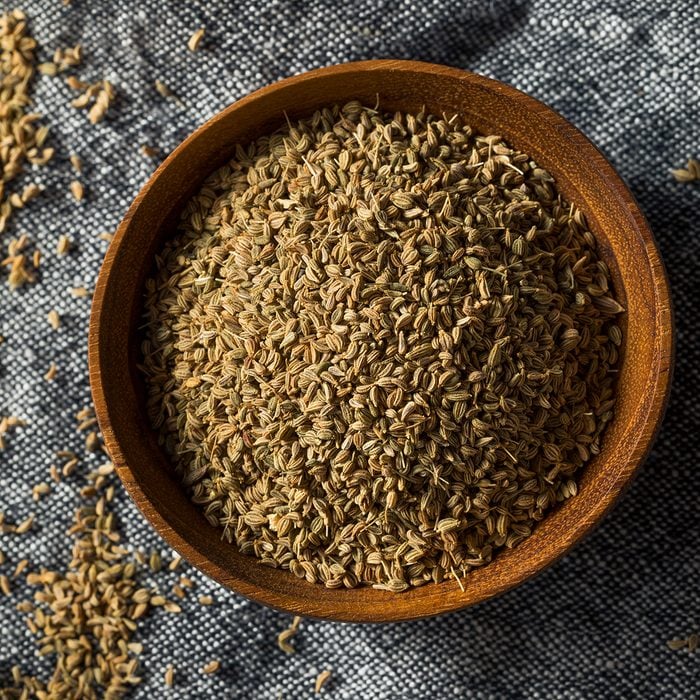 bhofack2/Getty Images
bhofack2/Getty Images
Ajwian Seeds or Carom Seeds
Pronounced as aj-wine, these small seeds are known for their medicinal value, especially in curing digestive problems. In India, many medicinal concoctions use carom seeds, but a small amount can be added as a flavoring agent while preparing the dough for Indian flatbreads like poori (deep-fried Indian flatbread) and layered flatbread paratha.
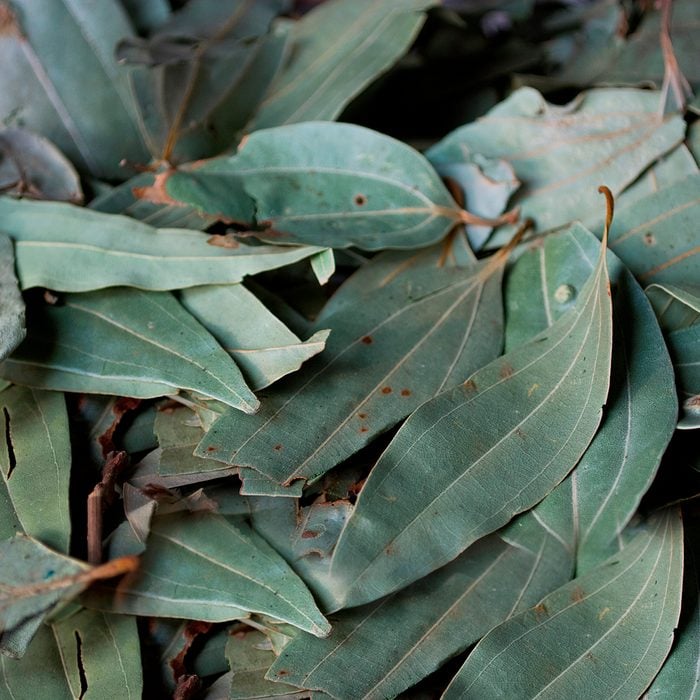 IndiaPictures/Getty Images
IndiaPictures/Getty Images
Bay Leaves
Indian bay leaves are known for their flavor and fragrance. Not to be confused with the bay laurel leaf, Indian bay leaves, popularly known as tej patta, are used in the dried form widely in curries, biryanis and korma. This aromatic leaf is also used in garam masala. Make sure you use these spices in these delicious Indian main dishes.
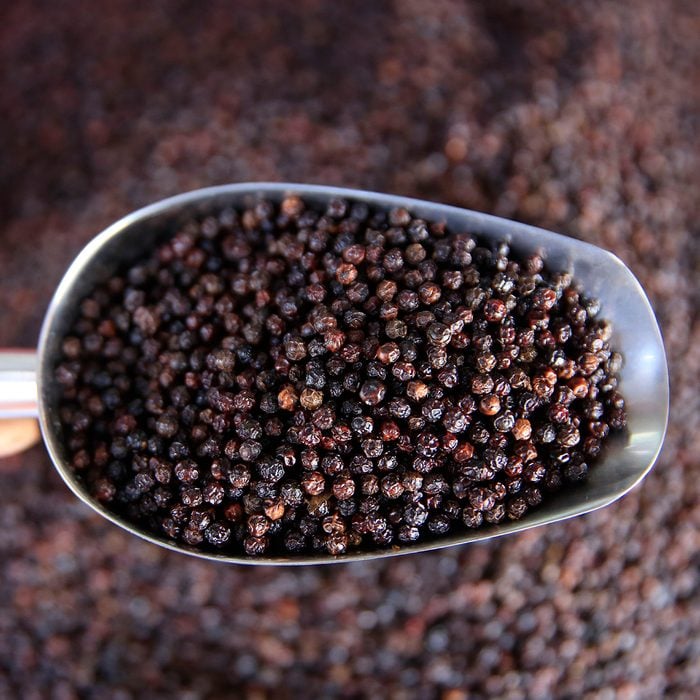 BSIP/Getty Images
BSIP/Getty Images
Black Peppercorns
This has been a staple seasoning in Indian kitchens since before chilies entered the country. Both whole black peppercorns and ground pepper are very common, but you can also see the usage of long pepper and white pepper varieties in Indian cooking.
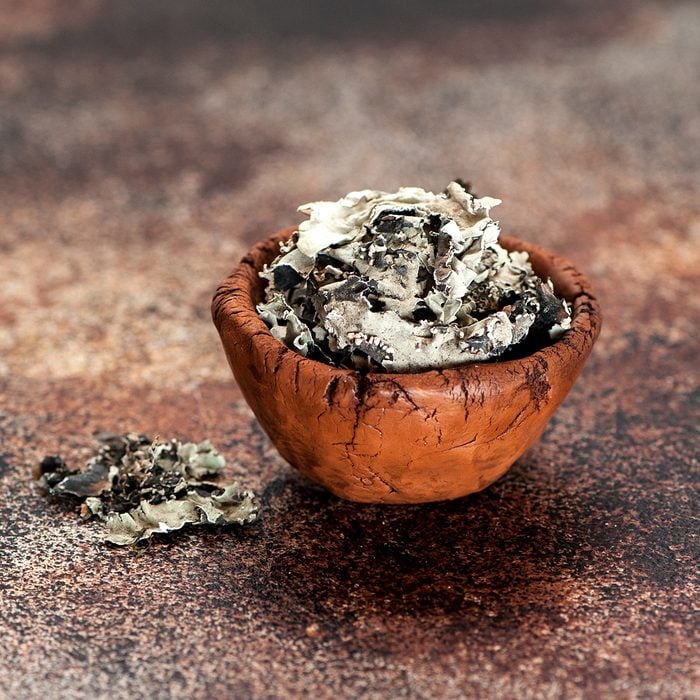 rozmarina/Getty Images
rozmarina/Getty Images
Black Stone Flower
The black stone flower is one of the less well-known Indian spices but a popular one on the Indian west coast and in South India. It is a lichen species and popularly known as dagad phool in Marathi (the Indian language spoken in the state of Maharashtra) and used for making goda masala.
Psst! Read up on how to organize spices in a drawer or cabinet and keep them clutter-free for good.
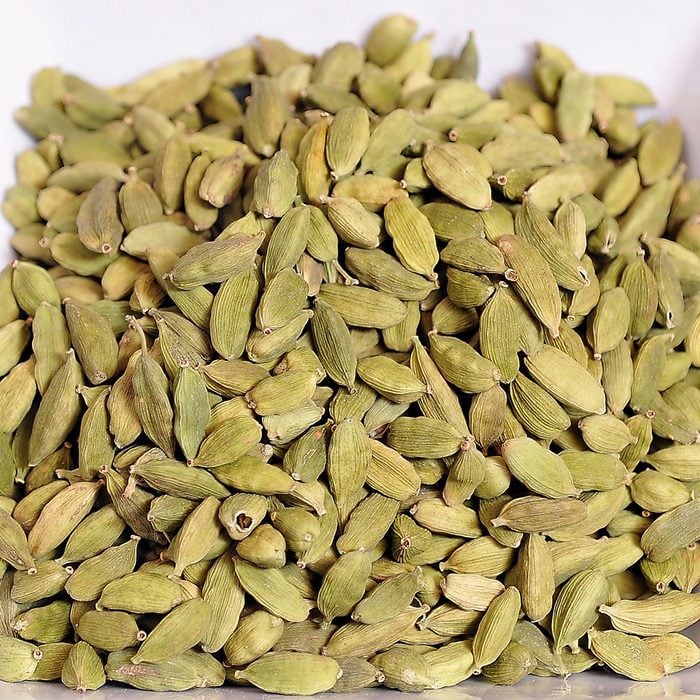 Portland Press Herald/Getty Images
Portland Press Herald/Getty Images
Cardamom (Green and Black)
You can find this aromatic spice in both savory and sweet dishes in India. Yes, we use cardamom for kheers/sweet puddings and many other sweets (such as besan ladoo)—either in ground form or crushed form. Both green cardamom and black cardamom (known as badi elaichi) are used in curries, kormas, biryanis and garam masala. (Here’s how to make kheer.)
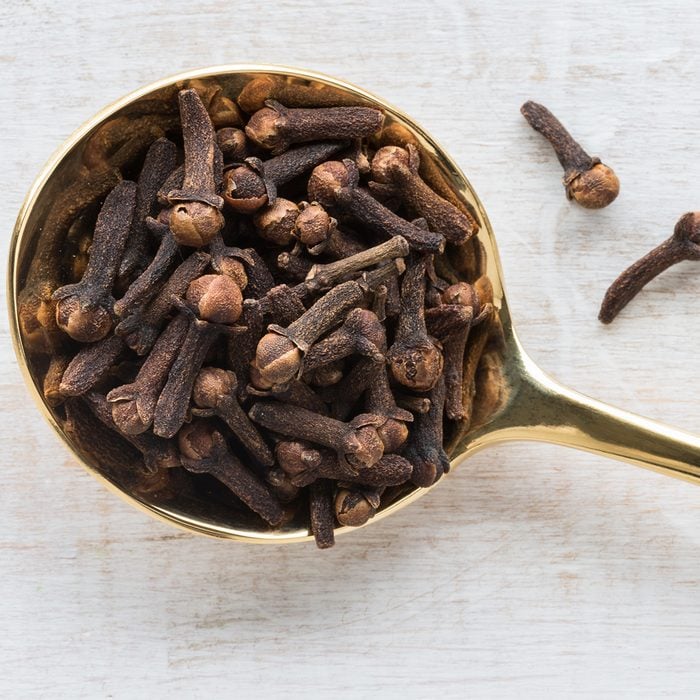 Michelle Arnold / EyeEm/Getty Images
Michelle Arnold / EyeEm/Getty Images
Cloves
Along with cardamom and cinnamon bark, cloves are an integral part of Indian curry pastes, spice powders, biryanis, kormas and desserts. Cloves add a distinct flavor to kheer/sweet pudding, and masala chai is incomplete without cloves. Because of its antibacterial and anti-inflammatory properties, cloves are an essential ingredient in various medicinal concoctions and are the best home remedy for toothaches.
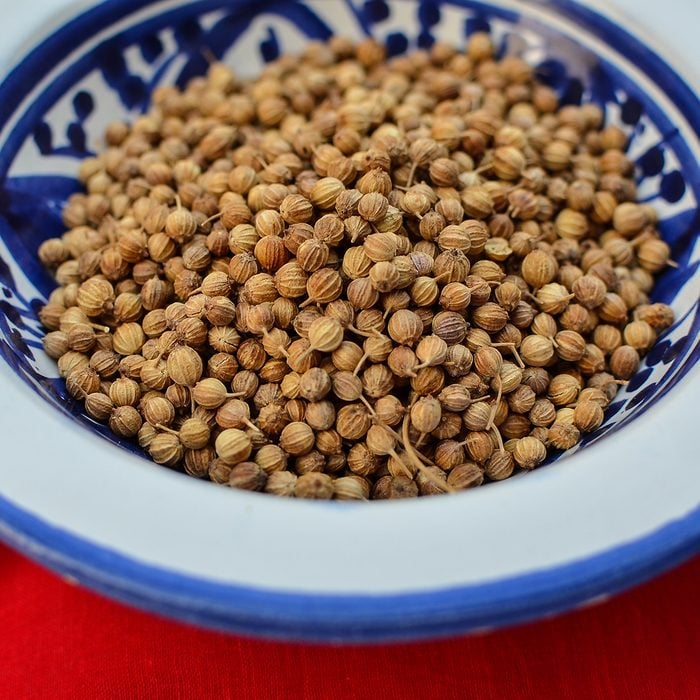 Stefan Irvine/Getty Images
Stefan Irvine/Getty Images
Coriander (Fresh, Whole and Ground)
Fresh herbs always enhance the flavor of any dish, which holds true with coriander leaves, too. Adding fresh coriander leaves as a garnish toward the end enhances the flavor significantly. Coriander leaves are used in assorted chutneys, and the most popular one is green chutney for chaat.
The ground form of dried coriander seeds is coriander powder. You will find both coriander seeds and coriander powder in Indian kitchens. When making fresh sambar masala or garam masala, we use coriander seeds, and coriander powder comes in handy for all Indian curries and gravies.
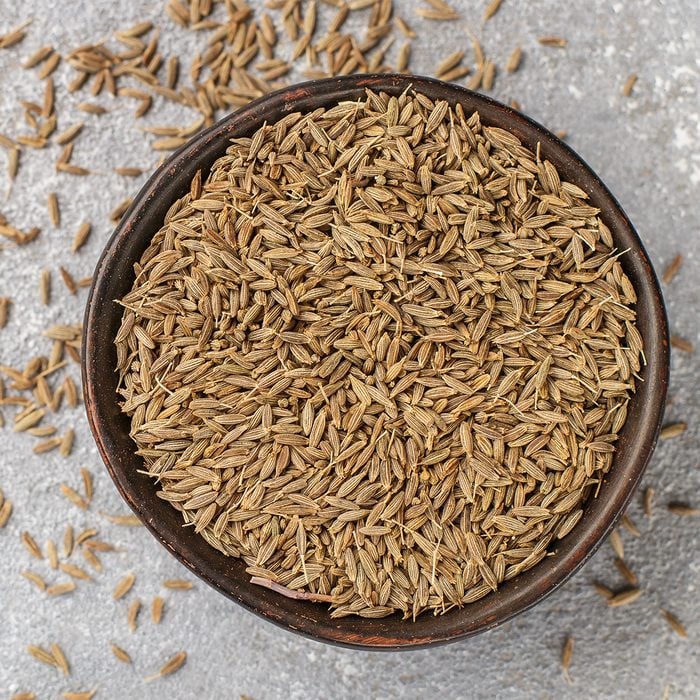 La_vanda/Getty Images
La_vanda/Getty Images
Cumin Seeds
The aroma of cumin seeds sizzling in ghee is exceptional! Most Indian tempering, or heating spices in ghee, calls for cumin seeds along with mustard seeds. Both cumin seeds and ground cumin are used extensively in the Indian subcontinent. Freshly roasted and ground cumin adds amazing zing to deep-fried snacks and chaat, and many South Indian curry pastes use cumin seeds as a key ingredient.
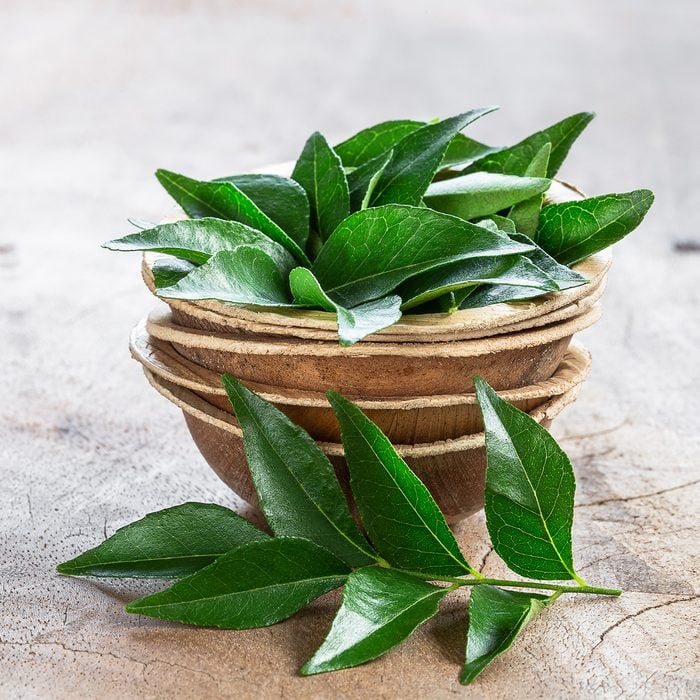 rostovtsevayulia/Getty Images
rostovtsevayulia/Getty Images
Curry Leaves
This is one of the more popular herbs of India. They are also known as sweet neem leaves, as they look like neem leaves but are darker in color and not as bitter. Extensively used in South India, adding a handful of curry leaves during tempering adds a distinct flavor to curries and gravies. You can also make chutneys and spice powders with curry leaves to eat with rice.
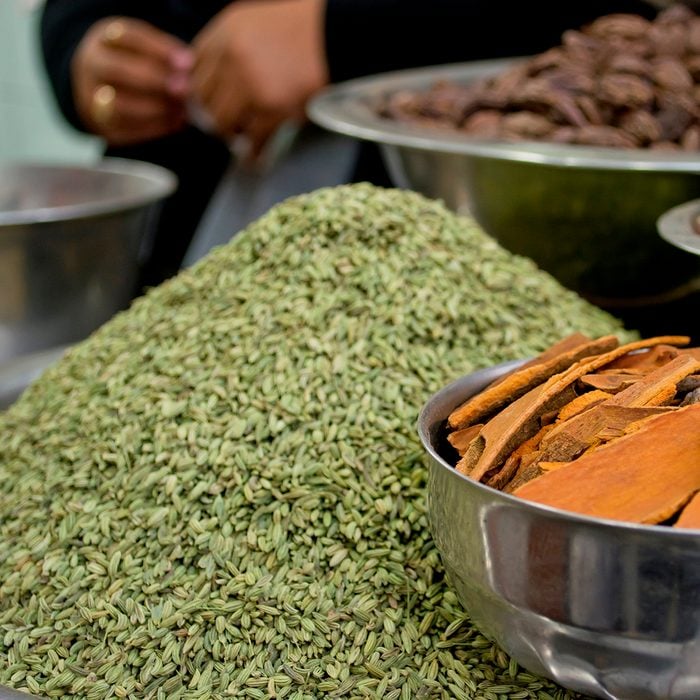 IndiaPictures/Getty Images
IndiaPictures/Getty Images
Fennel Seeds
Fennel seeds or saunf, as they say in Hindi, are a natural mouth freshener, and you can chew them raw like cloves. Fennel seeds are the key ingredient in the candied mouth fresheners that you find in Indian restaurants. Fennel seeds are sometimes used in tempering, but they are widely used to prepare curry pastes, especially in South Indian cuisine and other spice mixes.
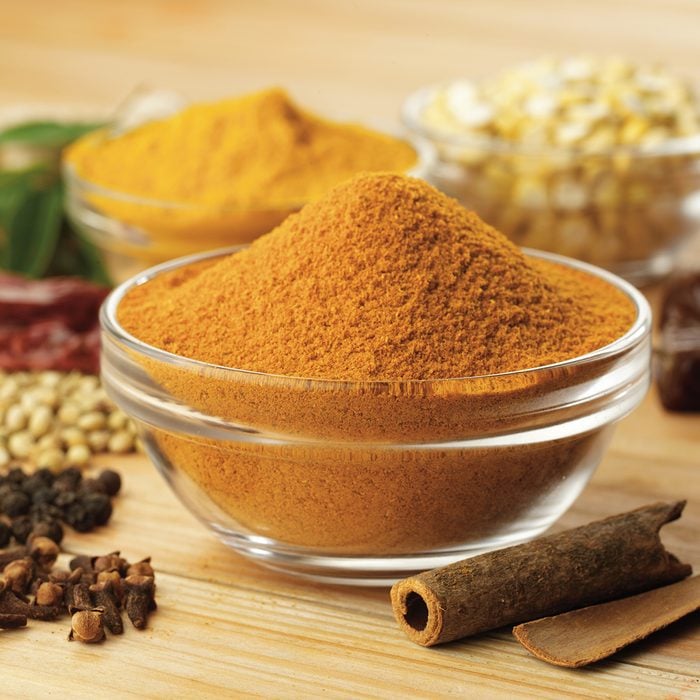 ShashikantDurshettiwar/Getty Images
ShashikantDurshettiwar/Getty Images
Garam Masala
Garam masala is an all-in-one spice blend that enhances the flavor of curries and gravies. It’s usually made with coriander seeds, cloves, cardamom, cinnamon, cumin and black pepper—but there is no one set recipe for garam masala. The ingredients and the measurements vary depending upon the region. Some roast the spices before blending and some are a raw blend of spices.
While we can add roasted and ground garam masala towards the end of the dish for added flavor, we need to cook the unroasted blend along with the veggies. Check out these recipes using garam masala.
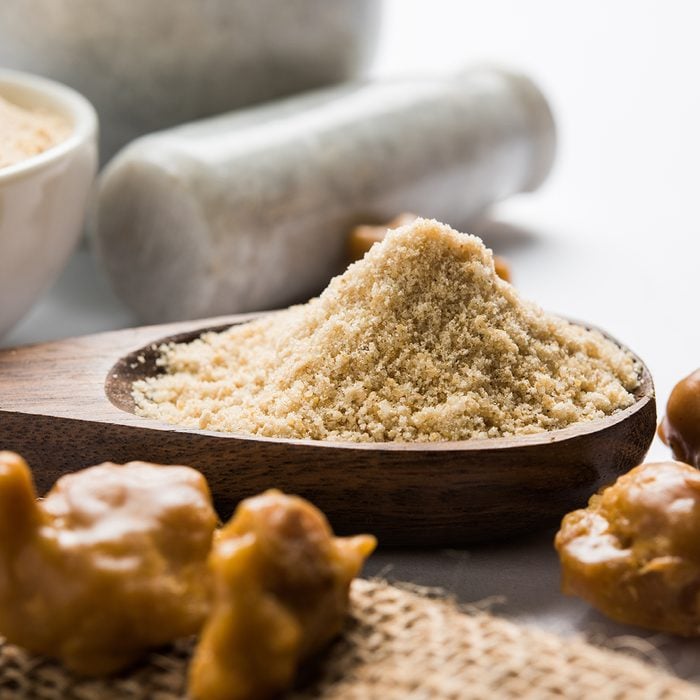 subodhsathe/Getty Images
subodhsathe/Getty Images
Hing/Asafoetida
Asafoetida is a dried gum or latex extracted from the ferula plant’s sap. It has a pungent smell, with some calling it “stinking gum” for that reason. In Indian cooking, asafoetida is added to dishes that are hard to digest, as asafoetida aids in relieving gaseous problems.
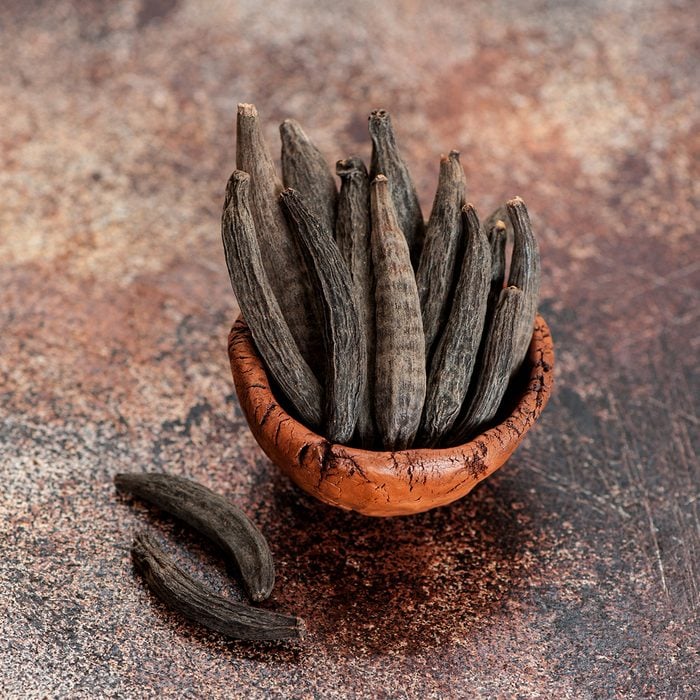 rozmarina/Getty Images
rozmarina/Getty Images
Kapok Buds
Kapok buds are Indian capers, and they are the dried buds of the kapok tree or the silk cotton tree. They look like larger cloves but taste entirely different. Kapok buds are used in the state of Karnataka to make bisi bele baath (a curried lentil rice with vegetables).
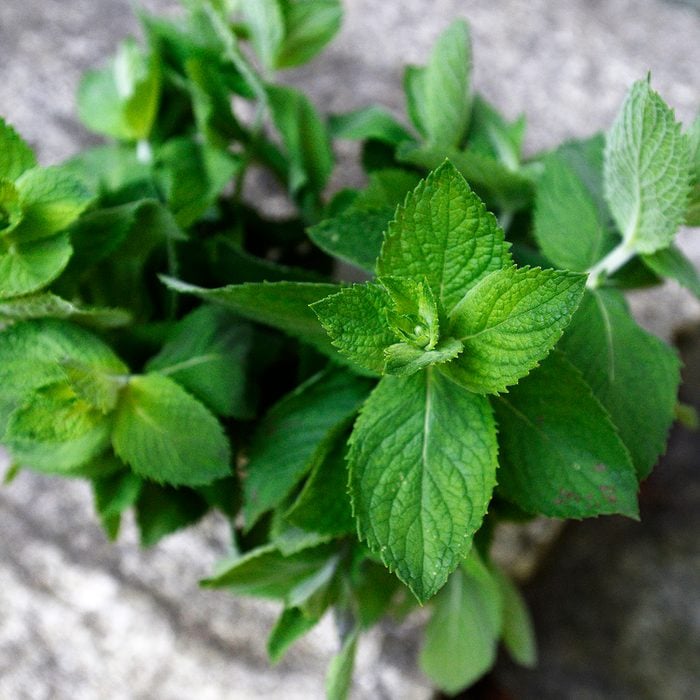 Portland Press Herald/Getty Images
Portland Press Herald/Getty Images
Mint
The refreshing herb mint or pudina (the Hindi name) has found its way into the Indian kitchen in multiple ways. You can find fresh mint chutneys, raita or yogurt relish and salads. This herb is also used in biryanis and pulao, and you can find different variations of mint pulao or mint rice across India.
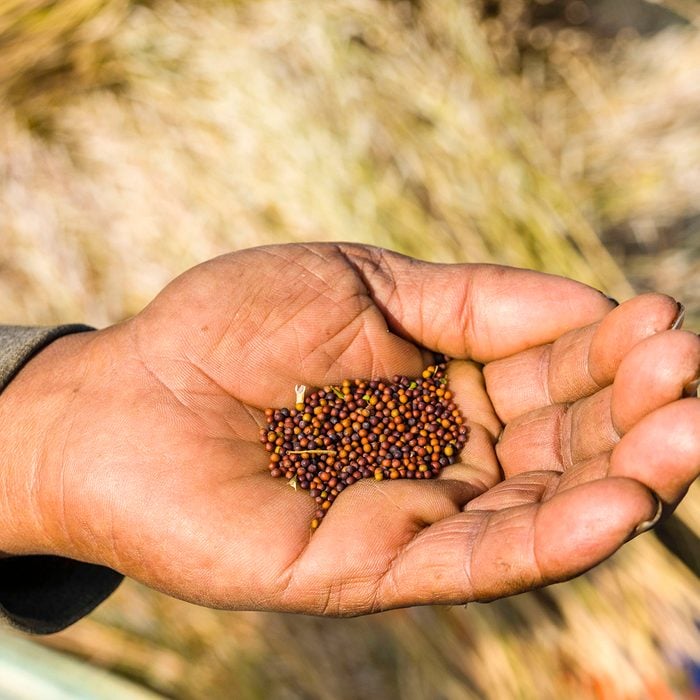 Frank Bienewald/Getty Images
Frank Bienewald/Getty Images
Mustard Seeds
The mustard is a plant with two purposes: the seeds are used as a spice and the greens are edible. The famous Punjabi dish saag is prepared with mustard greens. Mustard seeds come in two colors: black/brown and yellow. The black ones are widely used for tempering; the yellow mustard seeds are among the panch phoron spice mix’s five spices.
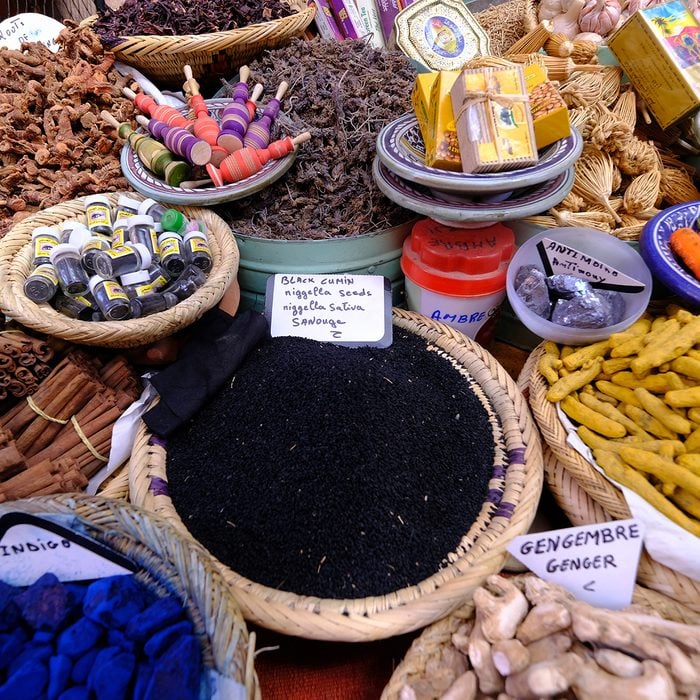 Yuriko Nakao/Getty Images
Yuriko Nakao/Getty Images
Nigella Seeds
Nigella seeds or kalonji (Hindi name) are often confused with black sesame seeds. Even though they look similar, the flavor profile is entirely different. The nigella seeds have a slight onion flavor, and the roasted seeds add more tastes to curry and gravy. These nigella seeds are an integral part of the Indian pickle masala popularly known as the achari masala.
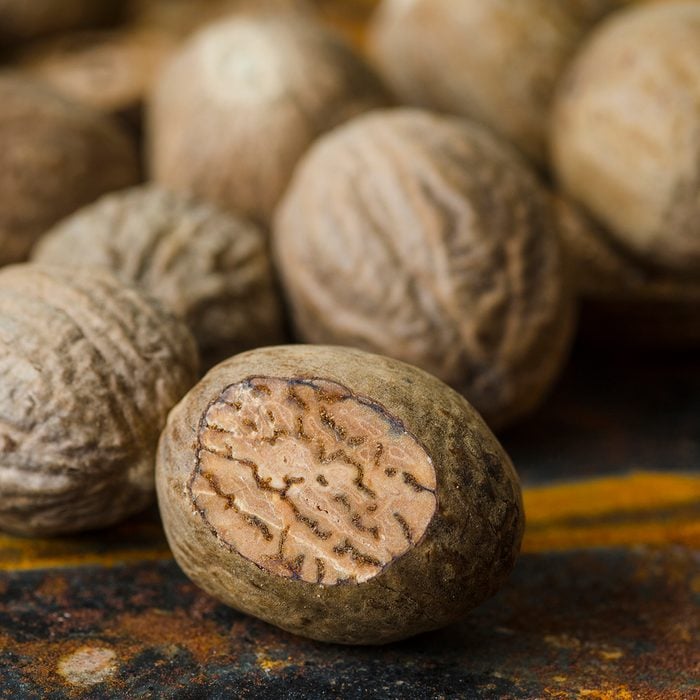 Westend61/Getty Images
Westend61/Getty Images
Nutmeg & Mace
Mace is the lacy outer cover of the nutmeg seed. The dried mace is used as part of spice blends and biryanis, whereas nutmeg is used in desserts. A small amount of nutmeg is sufficient for flavoring the dishes. This is the tool you need to grate fresh nutmeg.
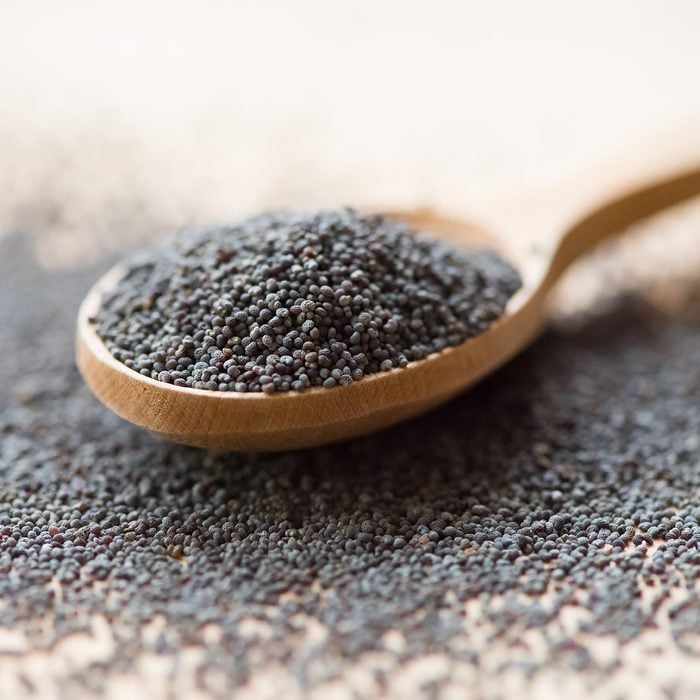 alexxx1981/Getty Images
alexxx1981/Getty Images
Poppy Seeds
In India, ground white poppy seeds are popular. The poppy seeds are ground with other spices and used in korma in South Indian curries. The famous Bengali dish posto also uses poppy seed paste. Apart from savory dishes, the ground paste is also used for flavoring drinks like thandai.
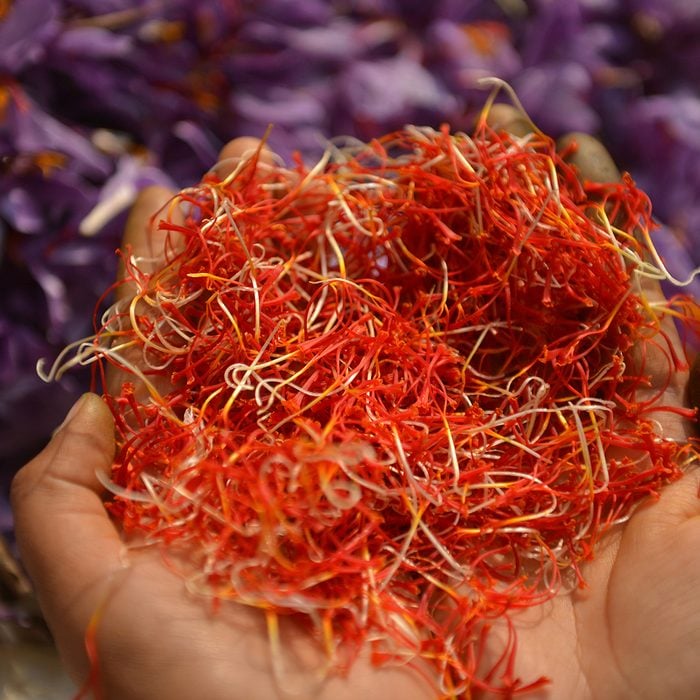 TAUSEEF MUSTAFA/Getty Images
TAUSEEF MUSTAFA/Getty Images
Saffron
Saffron is the world’s expensive spice. It comes in small threads known as saffron strands. Saffron is slightly crushed and soaked in lukewarm water or milk to release its full flavor and color. Like cardamom and cloves, you can find saffron being used in both sweet and savory dishes. Be it in Indian kulfi (ice cream), kheer or dum biryani, saffron always adds rich flavor and color.
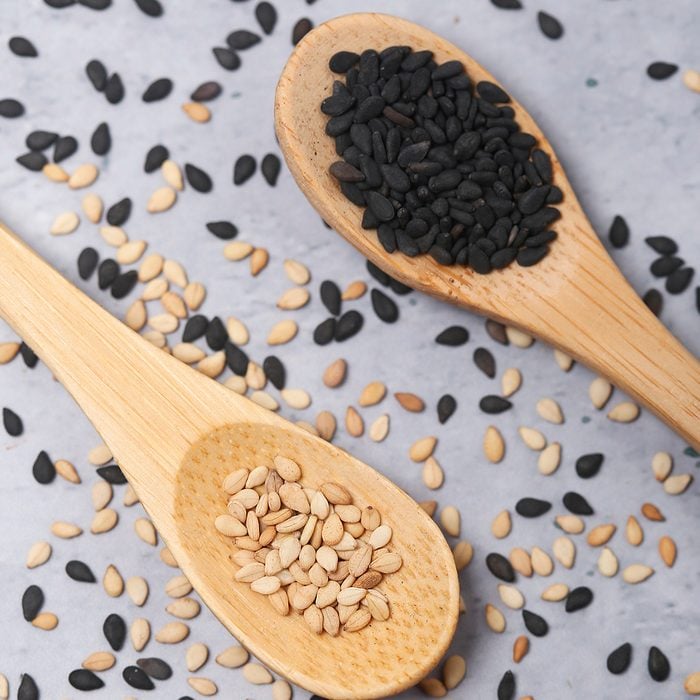 retales botijero/Getty Images
retales botijero/Getty Images
Sesame Seeds
These tiny oil-rich seeds are rich in calcium, and you can find both white and black sesame seeds widely used in Indian cuisine. What’s the difference? Black sesame seeds are unhulled, and the white ones are hulled with the skins removed.
Toasted and ground sesame seeds are combined with jaggery for the famous Indian dessert laddu. You can find different variations of these desserts across India. Learn more about laddus and other food served at Diwali.
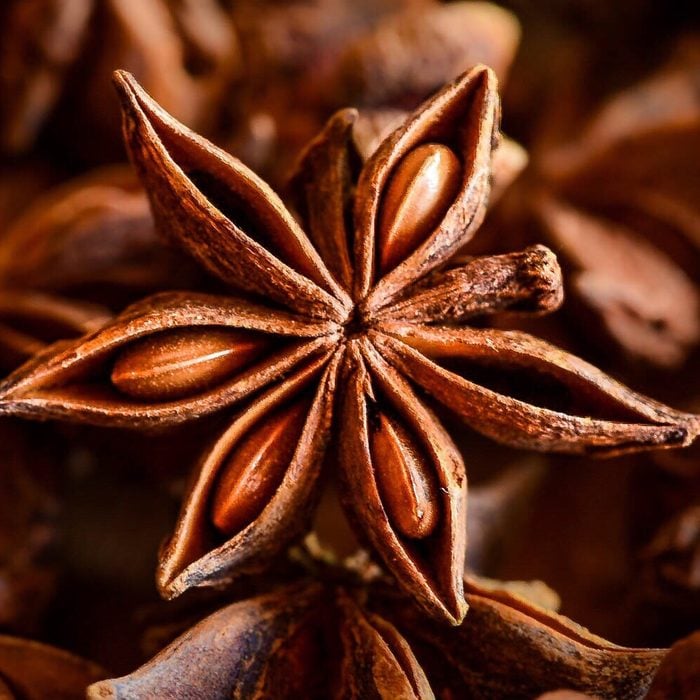 Michelle Arnold / EyeEm/Getty Images
Michelle Arnold / EyeEm/Getty Images
Star Anise
Star anise, the pretty-looking star-shaped spice, is commonly called star anise seed or Chinese star anise. This licorice-flavored spice is used in different spice blends and also in kormas and biryani.
It even has medicinal benefits. Star anise is a good source of shikimic acid used in the manufacturing of Tamiflu, a flu treatment medicine.
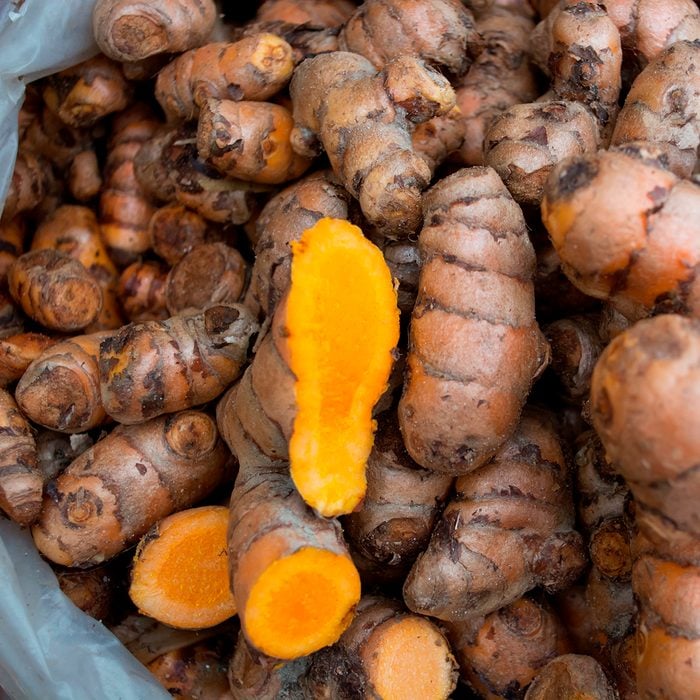 IndiaPictures/Getty Images
IndiaPictures/Getty Images
Turmeric
This golden spice is one of the quintessential ingredients in the Indian kitchen. Like red chili powder, it’s hard to find an Indian household without it. The curcumin found in the turmeric gives the spice its bright yellow color.
Ground turmeric is used in stews, curries, gravies, lentils—and, well, pretty much in all dishes, not only for the color but also for its medicinal benefits. The body absorbs curcumin faster when we add turmeric along with spicy and savory ingredients.
